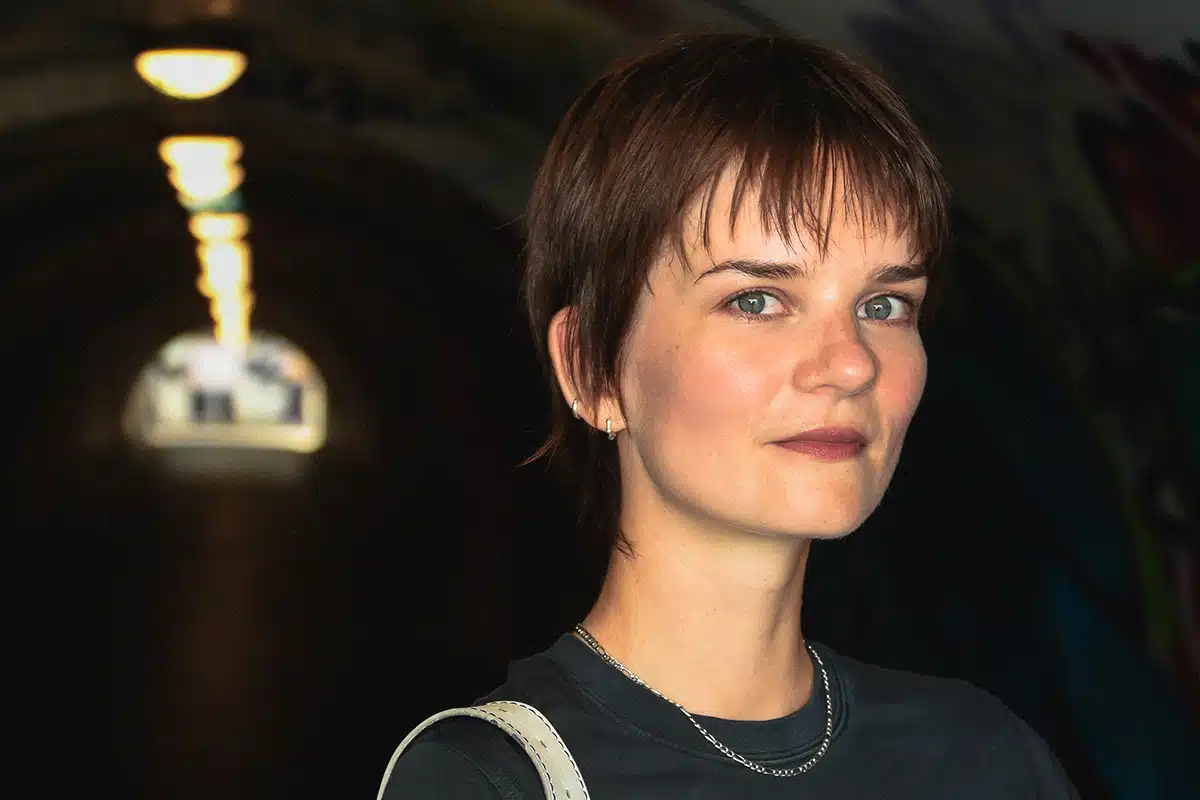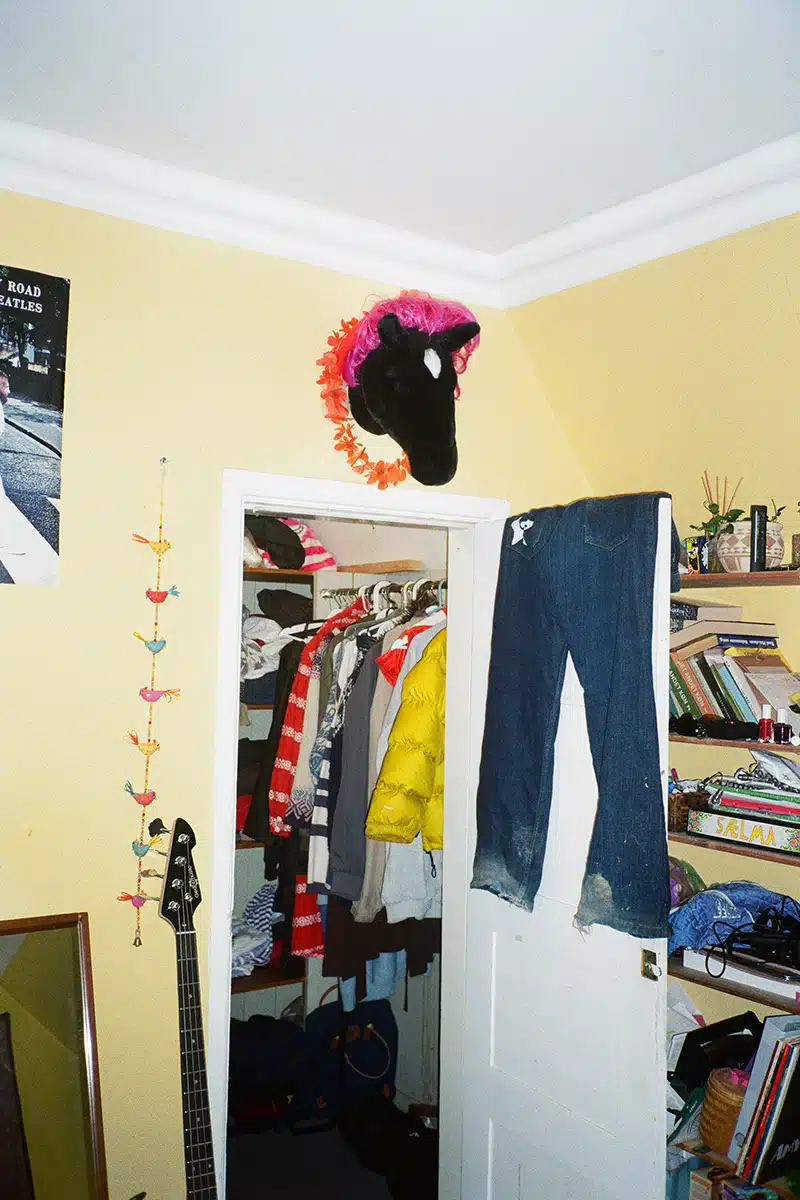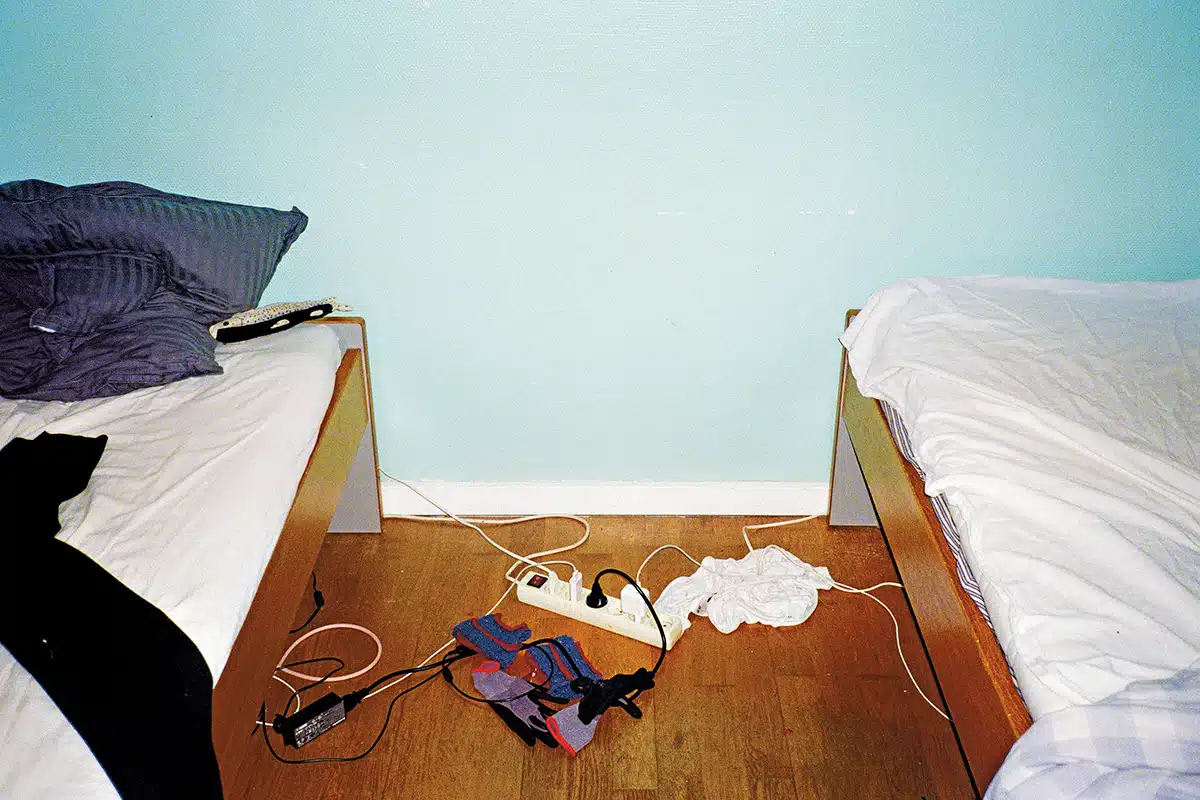
Photo: Carsten Pedersen
Behind the Door of the Teenage Bedroom: Interview with Barbara Marstrand
Behind the Door of the Teenage Bedroom: Interview with Barbara Marstrand
By Asta Melchior Jelsing
September 9, 2024
The teenage bedroom is a place where the door is often closed, and few are granted entry. Yet, Barbara Marstrand was allowed into 45 different teenage rooms. We spoke with her about what she found behind those doors.
A power strip by the bed, a chair piled with clothes, and a wall filled with magazine clippings and posters. Colors, clutter, and autonomy. This is what Barbara Marstrand encountered during her many visits to teenage bedrooms across Jutland, Zealand, Funen, and Bornholm. She visited young people aged 13 to 20 – and one 24-year-old who still lived at home.
Her visits culminated in a photography project that explores and portrays how young people live in the world through photographs of their homes. In the photo book Still Life of Teenagers, Barbara Marstrand’s two main interests – people and aesthetics – blend together in what she describes as an almost magical way.

Photo: Barbara Marstrand
What did the teenage rooms you visited have in common?
»There are many common traits and many differences too. Both coexist, which makes it interesting. For example, a common feature in the pictures is that you can’t see how the room’s owner looks or what gender they are. Other common features include the bed, the desk, and the computer.
I’ve noticed that some people recognize aspects of the aesthetics or the atmosphere of the rooms as something familiar across time. When I was a teenager, I had things in my room similar to those in the book. The same goes for people who were teens 10-20 years before me.«
What do the things we surround ourselves with say about us?
»I think they reveal a lot about the kind of environment that makes us feel at home and what we like to surround ourselves with – our preferences, tastes, and interests. Some love having lots of things, while others are the complete opposite. The aesthetics of individual items also reveal something about the person who lives there. Is everything colorful, or just black and white?
There’s also a relationship between stability and experimentation that’s fascinating. For teenagers, home life isn’t static, as it might be for older people who are more settled. The ones I visited were very much experimenting, they made a collage on the wall or doodled on the wardrobe door because they liked it for a while.
Mette Sandbye, who wrote the foreword to my book, used the phrase ‘the principle of using what’s available as a decorating strategy’ – meaning, you decorate with what you already have. And I thought that was spot on.

Photo: Barbara Marstrand
For instance, there’s a photo from a boarding school room where a black toy horse head hangs over a door in a walk-in closet. It works as decoration, but I imagine it’s just something they had lying around. In another room, there’s a baseball bat standing by the entrance. I don’t necessarily think it’s meant as a design object, but at the same time, it hasn’t been put away either.
The way a room is decorated reflects both how someone wants to present themselves, what they think is cool, and what kind of life they live. And when you’re coming from the outside, you never know what’s intentional and what isn’t. That creates an interesting dynamic because it’s not polished in a way where only specific things are on display. Yet, I believe a lot of thought has gone into it.«
How do you see the teenage room?
»I see the teenage room both as a pocket within the home and as a space for autonomy. It’s a room within the family’s embrace, but it’s also a place where the teenager can express themselves freely, depending on the home, of course. At the same time, it points toward the outside world – both because they will eventually move out, but also through their screens. They always have a window to the world, which they can access from their bed.«
Some might imagine that people unfamiliar with teenagers could read your book and think, “This is what teenagers are like.” How do you view the book?
»I view the book as a cultural product that tells us something about our time right now. It’s a glimpse and a perspective on something. It’s an attempt to create a universe. All the things in the pictures are real, but they aren’t representative, and that’s not the goal. The book is more of an exploration, and while it offers insight, it’s insight shaped by my aesthetic choices and by the people I visited. I don’t see that as a weakness, but rather as part of the project’s character. The goal was to see what happens when you explore something visually.«

Photo: Barbara Marstrand
What did you learn?
»During the time I was taking the photos, I was genuinely excited every time I walked into a room. I learned to develop a heightened sensitivity to visual details because I was so focused on the space. It was a cool mode to be in.
But I would say that I learned the most from visiting all the families. They allowed a stranger into their homes and let me look at their things and photograph them for my project. It gave me a sense of connection.«
Were you inspired?
»Yes, I felt like having a few more details and being a little less ‘grown-up’ in my decor. But when I look around my apartment, I’m not sure if I’ve really embraced it. I have a little stuffed toy hanging in the kitchen. It’s from my sister in Japan, and when I got it, I thought – it can just hang there.«
Barbara Marstrand (b. 1994) is a photographer and holds a degree in sociology from the University of Copenhagen. She is passionate about exploring and highlighting parts of our culture that rarely get attention.
In her book Still Life of Teenagers, she presents 108 photo-filled pages revealing what lies behind the door of the teenage bedroom.
You can see selected images from the book in our exhibition Teenagedrømme.
This is an English translation made with an AI-based service and subsequently reviewed by an editor. For any clarifications, refer to the original Danish version.